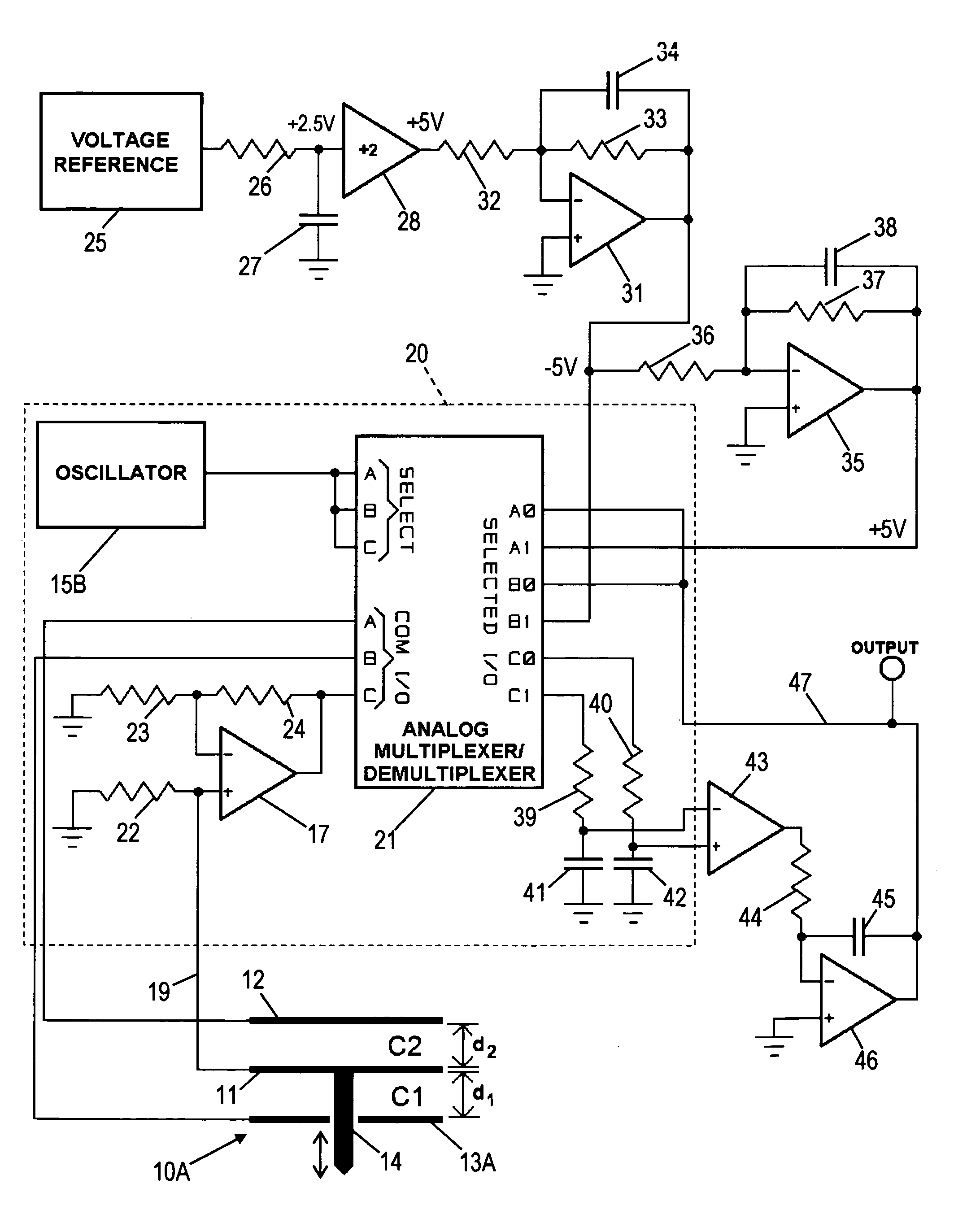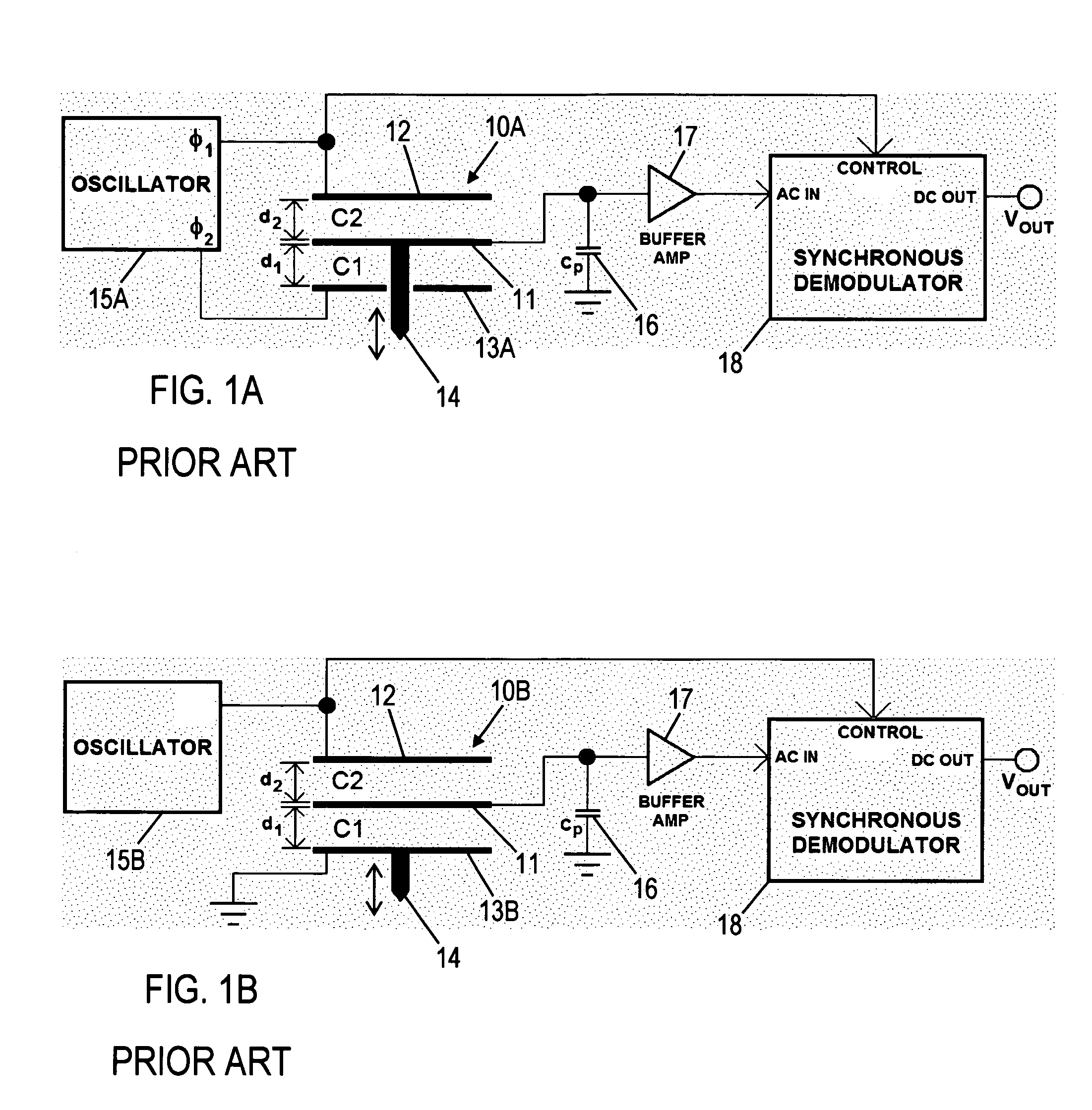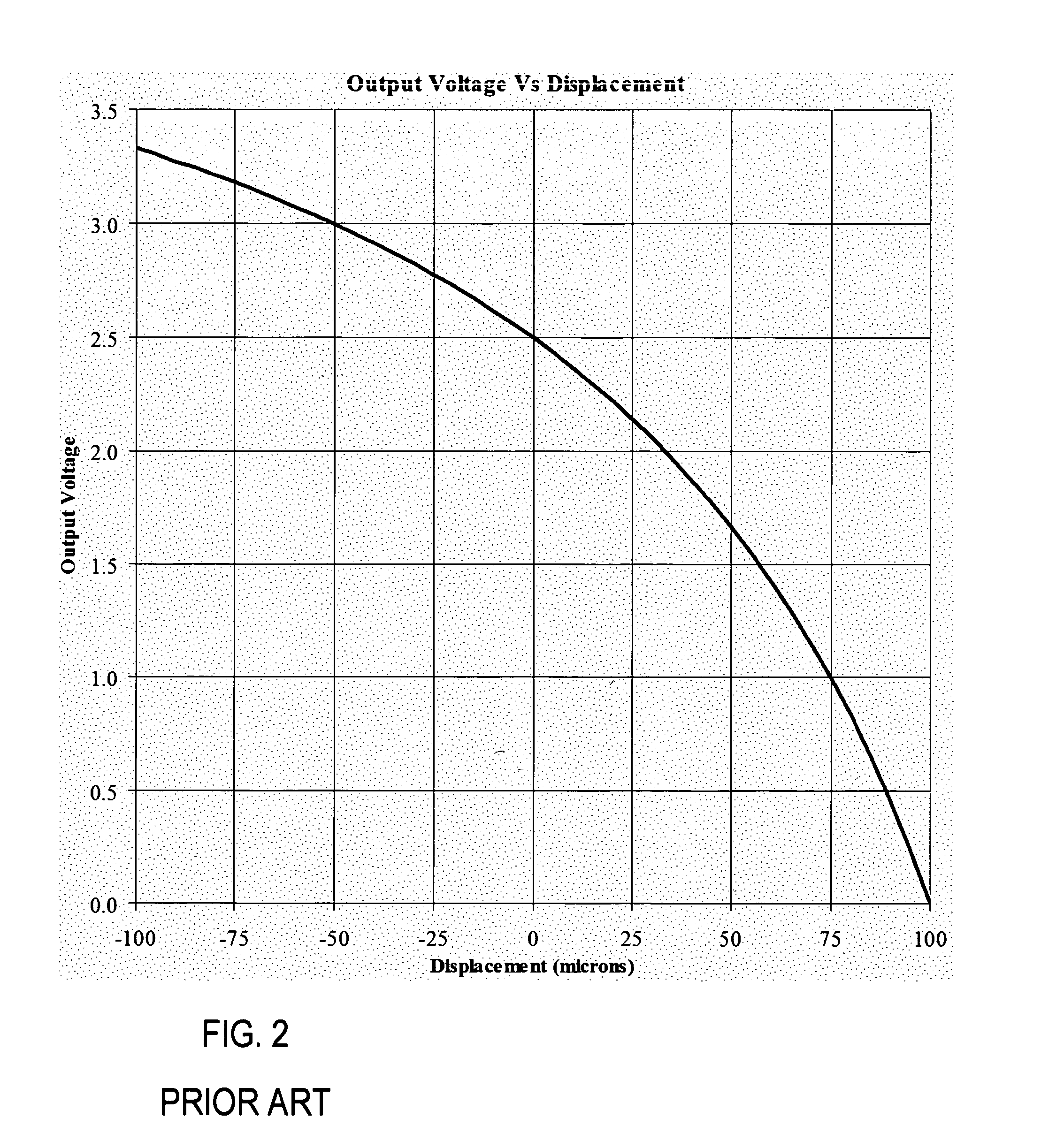High-performance drive circuitry for capacitive transducers
- Summary
- Abstract
- Description
- Claims
- Application Information
AI Technical Summary
Benefits of technology
Problems solved by technology
Method used
Image
Examples
Embodiment Construction
[0026]Before considering the circuit of this invention, an understanding of the prior art circuits, and the transducers used with them is helpful. The circuitry presented here operates with two variations of three electrode capacitive transducers. Transducer 10A shown in FIG. 1A has a first drive electrode 12, a second drive electrode 13A, and a pickup electrode 11. Pickup electrode 11 is located between drive electrodes 12, 13A and is movable with respect to the two drive electrodes. Drive electrode 13A is shown with a hole to permit passage through it by probe tip 14. Probe tip 14 interacts with a surface or sample being tested (not shown), and transmits force or displacement between the sample and pickup electrode 11. It is also possible to extend pickup electrode 11 out the side past the drive electrodes, in which case a hole is not required. In the case of an accelerometer, force is applied to pickup electrode 11 directly by the acceleration and neither the hole nor the extensi...
PUM
 Login to View More
Login to View More Abstract
Description
Claims
Application Information
 Login to View More
Login to View More - R&D
- Intellectual Property
- Life Sciences
- Materials
- Tech Scout
- Unparalleled Data Quality
- Higher Quality Content
- 60% Fewer Hallucinations
Browse by: Latest US Patents, China's latest patents, Technical Efficacy Thesaurus, Application Domain, Technology Topic, Popular Technical Reports.
© 2025 PatSnap. All rights reserved.Legal|Privacy policy|Modern Slavery Act Transparency Statement|Sitemap|About US| Contact US: help@patsnap.com



